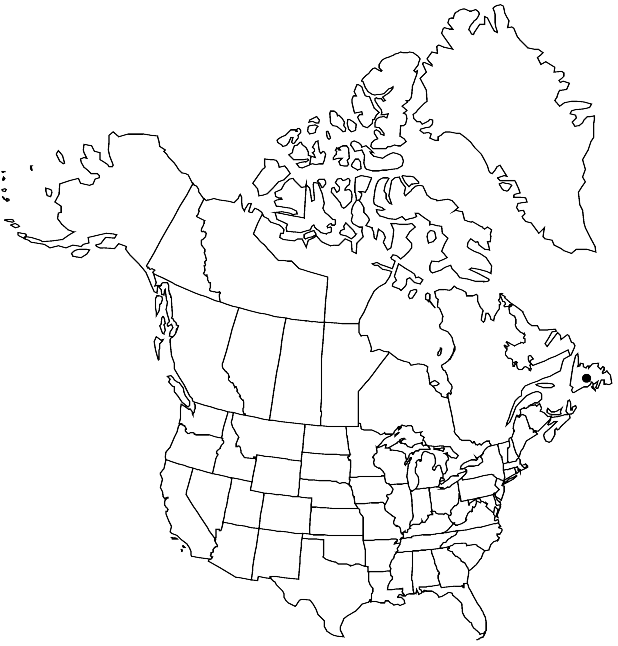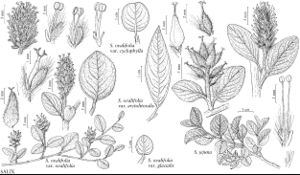Salix jejuna
Rhodora 28: 177. 1926.
Plants 0.01–0.04 m, usually forming clones by layering or rhizomes. Stems erect, decumbent, or trailing; branches red-brown, glabrous; branchlets yellow-brown or red-brown, glabrous. Leaves: stipules absent or rudimentary on early ones, foliaceous on late ones; petiole 1.5–4.9–14 mm; largest medial blade amphistomatous or hemiamphistomatous, elliptic, subcircular, or circular, 8–25 × 4–22 mm, 0.8–2.3 times as long as wide, base convex or rounded, margins slightly revolute, entire, sometimes ciliate, apex rounded or convex, abaxial surface glabrous, adaxial slightly glossy, glabrous; proximal blade margins entire; juvenile blade (reddish), glabrous, often ciliate. Catkins: staminate 5.5–14 × 5–10 mm, flowering branchlet 1–6 mm; pistillate moderately densely flowered, globose, subglobose, or stout, 8–29 × 6–14 mm, flowering branchlet 1.5–20 mm; floral bract brown, 1–1.8 mm, apex rounded, abaxially sparsely hairy or ciliate, hairs straight or wavy. Staminate flowers: abaxial nectary 0.6–1 mm, adaxial nectary narrowly oblong to ovate, 0.6–1.3 mm, nectaries distinct; filaments distinct; anthers ellipsoid to globose, 0.4–0.6 mm. Pistillate flowers: abaxial nectary absent, adaxial nectary narrowly oblong, ovate, or irregularly square, 0.6–1.4 mm, longer than stipe; stipe 0.2–1 mm; ovary obnapiform, not glaucous, usually glabrous, sometimes pubescent or short-silky, with hairs in patches or streaks, beak abruptly tapering to styles; ovules 9–18 per ovary; styles connate or distinct 1/2 their lengths, 0.5–1.4 mm; stigmas flat, abaxially non-papillate with rounded tip, or slenderly cylindrical, 0.24–0.32–0.4 mm. Capsules 3–5 mm.
Phenology: Flowering late Jun-mid Jul.
Habitat: Wet, thin, sandy-gravel soil on limestone barrens
Elevation: 0-20 m
Distribution

Nfld. and Labr. (Nfld.).
Discussion
Of conservation concern.
Salix jejuna, known from the Northern Peninsula of Newfoundland, is closely related to the western arctic S. ovalifolia. It is similar to S. ovalifolia in that leaves are hypostomatous, glabrous even when young, and with secondary veins raised on both surfaces. Its ovaries also are usually glabrous, but somewhat hairy plants sometimes occur in the same population. Plants with hairy ovaries may be confused with S. arctica but they are separable on the characters mentioned. Because of its small range adjacent to a highway, S. jejuna is at risk.
Selected References
None.
